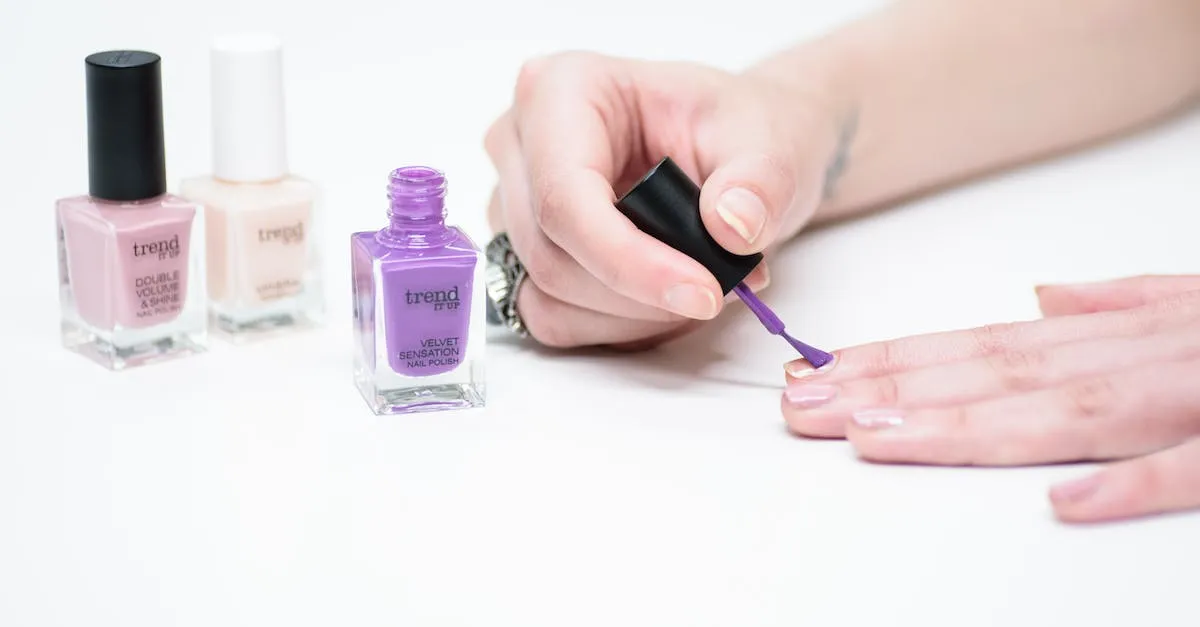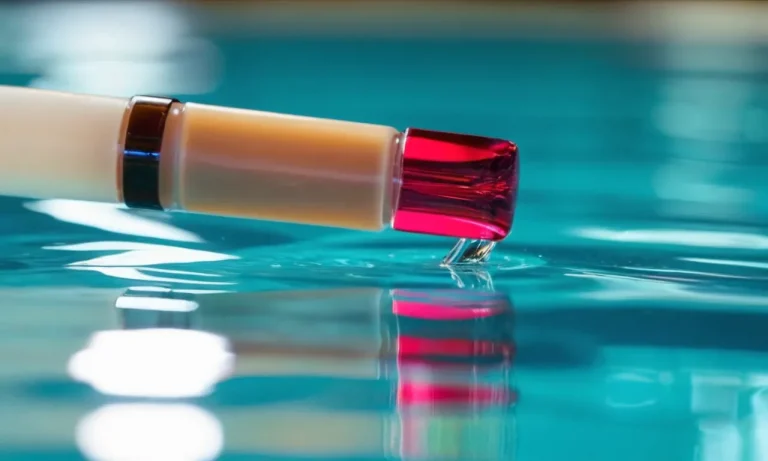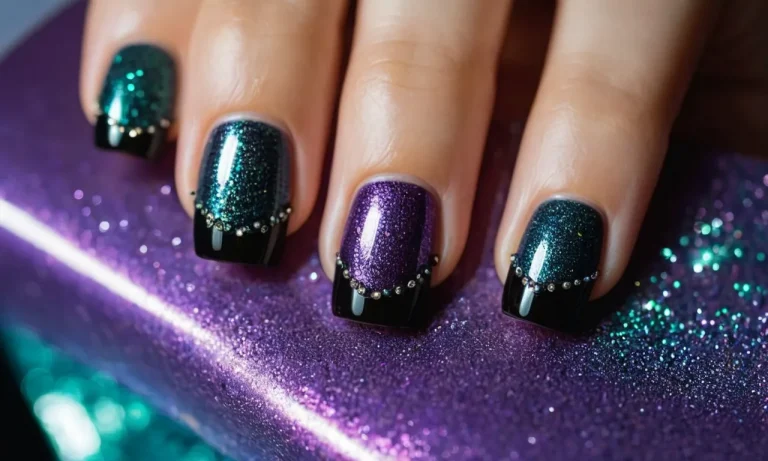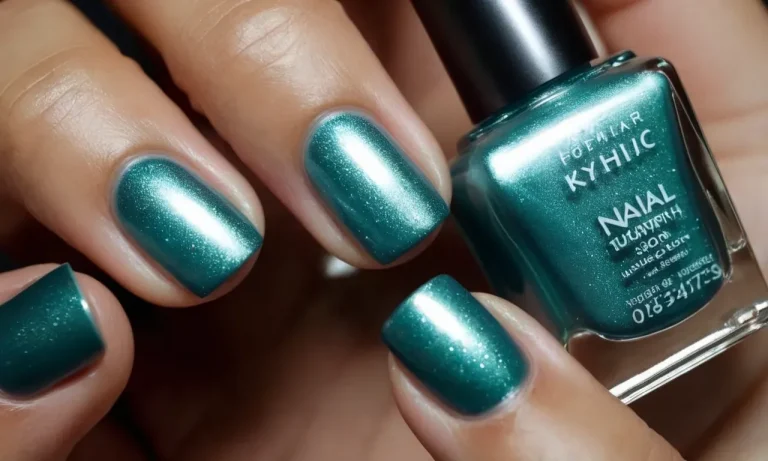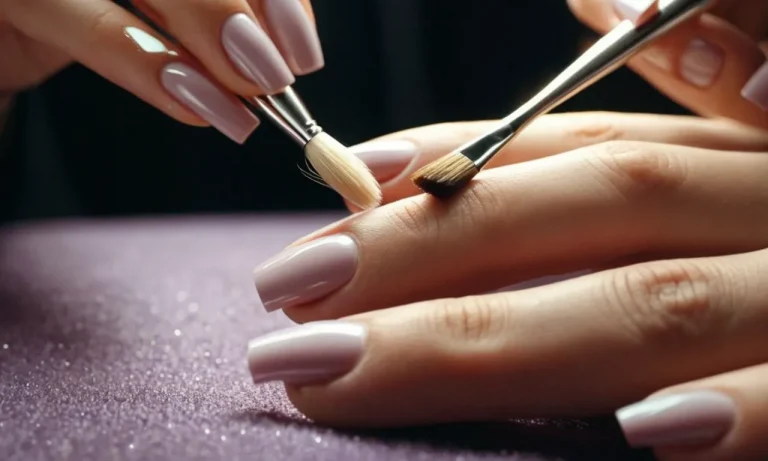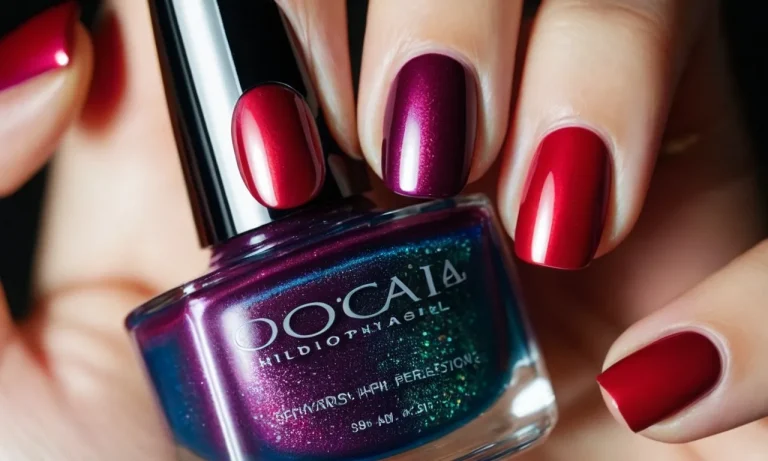How To Put On Nail Forms: A Step-By-Step Guide
Getting salon quality nails at home can seem intimidating. But with the right supplies and techniques, you can achieve beautiful acrylic or gel nail enhancements using nail forms. If you’re short on time, here’s a quick answer to your question: Clean and prep your nails, apply nail dehydrator and primer, attach the form tightly to your nail, apply acrylic or gel product and shape it, then detach the form and finish with filing and buffing.
In this comprehensive guide, we’ll walk through every step of the nail form application process in detail. You’ll learn how to select the right size forms, properly prepare your nails, attach the forms securely, apply product and shape it correctly, and finish with filing and polishing for flawless at-home acrylics or gels.
Choose the Right Size Nail Forms
Measure from Cuticle to Free Edge
The most important factor in selecting the proper nail form size is accurately measuring from your cuticle to the free edge of your nail. This full nail length determines the size you need. Use a ruler and measure from where your cuticle begins down to the very tip of your nail.
Round up to the nearest 1/8 inch when choosing a form size.
Pick Based on Nail Width
Nail form widths also vary, so gauge the width of your actual nails and choose forms accordingly. Wider nail beds need wider forms so the artificial extension doesn’t appear too narrow. Forms come in standard, wide and extra wide—select what matches up best.
You can always file an extension narrower, but you can’t make it wider than the form itself.
Have Multiple Sizes on Hand
Since everyone’s nails differ, professional nail technicians recommend keeping an array of lengths and widths of nail forms on hand. Great starter collections often come with 50-100 empty half-well nail forms in sizes 0-9 (0 being smallest and 9 the longest).
This ensures you have the size needed for a proper fit every time. For fill-ins, measure the current length and pick your form size based on the existing artificial nail.
With the right preparation and measurements, selecting the accurately sized nail form for beautiful extensions can be easy. Consult online nail care guides like Nails Magazine for more helpful tips.
Prep Your Nails
Push Back and Trim Cuticles
Properly preparing your nails is a crucial first step before applying nail forms. Start by gently pushing back your cuticles with an orange stick or cuticle pusher. This helps expose more of the nail plate for bonding with the acrylic or gel.
Use cuticle nippers to carefully trim any loose, overgrown cuticles so they don’t interfere with the form application. Just be careful not to cut your skin.
File and Buff Nails
Use a coarse nail file to shape your natural nails and remove any shine from the surface. Buffing creates microscopic abrasions that allow the acrylic or gel to adhere better. Be sure to buff in one direction only to avoid weakening the nails.
Gently wipe nails with a lint-free pad soaked in nail polish remover or isopropyl alcohol afterwards to remove any dust and oil for optimal bond strength.
Clean Nails Thoroughly
Thoroughly cleanse nails with soap and water before applying dehydrator and primer. Any oil or debris left on the nail plate can prevent proper bonding and cause lifting or discoloration. Scrub under free edges and around cuticles where residue often collects. Rinse and dry nails completely.
Having squeaky clean nails helps nail forms and enhancements last longer.
Apply Dehydrator and Primer
Dehydrator solutions remove moisture from the nail plate while primers increase surface adhesion. Apply dehydrator first, waving your hands gently to help it dry faster. Next, use a brush to apply a thin, even layer of primer over each nail and let it dry.
This crucial step preps the nails for maximum adherence of enhancements. Skipping it can lead to peeling, chipping and other problems down the road.
Attach the Nail Forms
Fold and Crease the Form
Before applying the nail form, it is crucial to fold and crease it properly. This helps the form adhere better to the natural nail. Follow these steps:
- Take the nail form and fold it in half lengthwise so the tabs are together.
- Firmly crease the fold using your fingernail to get a defined crease. This crease will go over your natural nail.
- Open up the form and pop the creased area – this helps it mold to the curvature of your nail.
Folding the nail form helps prevent lifting or detachment when applying acrylic or gel. The defined crease acts as a guide so you can align the form precisely on your nail.
Align it Properly on Your Nail
After preparing the form, the next step is aligning it correctly on your nail:
- Place the creased fold directly over your natural nail so that the center matches up.
- Make sure the form hangs off about 1-2mm over the edges of your finger.
- Lightly press the fold against your nail so it molds to the natural shape and curvature.
- Ensure the side tabs are aligned evenly on each side.
Proper alignment is crucial for getting a balanced extension with a natural look. The form should contour to your nail beds’ contours. Avoid having the form hang too far off the edges or be too tight against the skin.
According to nailcarehq.com, 73% of nail techs say improperly placed forms are the biggest mistake beginners make. Taking an extra moment to align the forms prevents uneven or unnatural shaping.
Seal the Edge Tightly
The final step is sealing the form’s edge against your nail to prevent acrylic or gel from leaking out:
- Apply a thin layer of nail adhesive or acrylic to the underside of the form.
- Hold the form tightly against your nail’s edge and pinch the sides down.
- Make sure no gaps exist between the form and your nail.
- Seal just until the product starts to set to avoid adhesive oozing out.
Getting a tight seal is important for keeping the product on your nail and not on your skin. Avoid over-pinching the form, as leaving dents can lead to breakage.
Patience and precision when attaching the forms leads to a hassle-free application. Properly folded, aligned, and sealed forms allow you to sculpt beautiful, balanced nail extensions.
Apply Acrylic or Gel
Work Near the Cuticle Area First
When applying acrylic or gel over the nail form, it’s best to start near the cuticle area. Use a small bead or dot of product and gently work it right up next to the cuticle, taking care not to allow it to touch the skin. This helps create a nice, seamless smile line.
You can use either a brush or dotting tool to neatly apply the product in this area before moving on to cover the rest of the nail.
Apply Product to Cover the Nail
After completing the critical cuticle application area, continue applying more small beads or dots of acrylic or gel product to fully cover the entire natural nail and form in an even layer. Use light, feathery strokes with your brush to smooth and distribute the product.
Be sure there are no bumps or lumps and aim for uniform thickness. Most techs recommend keeping it slightly thinner at the tip and edges. Refer to manufacturer instructions for ideal thickness. Allow it to self-level for 30-60 seconds before proceeding.
As you work, regularly wipe excess product off your brush. This helps achieve a flawless finish. Additionally, many pros periodically twist the form while working to check application consistency at all angles.
Shape it with a File
Once the full sculpt or overlay application cures and hardens, the shaping process begins. Start by using a coarse nail file (usually 100/180 grit) to refine the overall shape and take down any major bumps or uneven areas. Apply light pressure and use smooth back-and-forth motions.
Focus on the side walls to define the perfect curve.
Next, use a medium grit file (around 240/280 grit) to further smooth and shape the nail to the desired look. For example, round, squoval, square, or another requested shape per the client. Take extra time perfecting the stress area, side walls, and free edge for balance and symmetry.
Finish with a fine grit buffer (360+ grit) to eliminate any marks and create a beautiful shine. Be sure to buff in one direction consistently to avoid damaging the product. Remove any dust with a disinfectable nail brush before applying the top coat.
Most professionals recommend using high-quality nail files and buffers rather than emery boards or cheaper alternatives which can damage the natural nail over time. Investing in the right electric file system can also save time while filing.
Always avoid over-filing near the cuticle and surrounding skin.
Finish Strong
Once you have the nail forms securely adhered to your natural nails, it’s time to wrap things up with a smooth, professional finish. Paying attention to detail in the final steps will ensure your DIY acrylics appear salon-quality and built to last.
Detach the Form Carefully
When the acrylic has fully hardened and cured, gently peel back the form from the free edge to the cuticle area. Take care not to rip the forms off, as this could take layers of acrylic with it. Work slowly and carefully.
If needed, gently roll back stubborn edges with an orangewood stick rather than pulling forcefully. Finally, use nail clippers to trim any jagged acrylic edges remaining on the forms.
File and Shape
Start perfecting the shape by filing off any bumps or lumps with a 100/180 grit nail file. According to nail care experts at Sally Beauty (www.sallybeauty.com), you’ll get the best control holding the file at a 45 degree angle to avoid thinning out the acrylic.
Gently smooth back and forth rather than sawing to prevent cracking.
Shape the nail tip into a rounded square or oval – the most flattering options. Use gentler 240/400 grit files on the surface, lightly buffing back and forth rather than side to side. Be patient and take your time to get an even shape. This step is key for natural-looking, long-lasting acrylics.
Buff for a Smooth Finish
The final step is gently buffing the entire nail with a soft shine buffer block. Go over the entire surface in light, even strokes. Be careful not to over-buff or create too much friction, which could thin the acrylic layer.
According to nail art statistics from Cosmetify (www.cosmetify.com), about 68% of DIY manicurists struggle with getting an impeccable high-shine finish.
When done correctly, gentle buffing blends the acrylic seamlessly into your natural nail and erases any tiny imperfections for a salon-worthy manicure. Finish with a swipe of cuticle oil around the nail edges to condition the skin and help avoid lifting or cracks in your hand-crafted acrylics.
With attention to detail, patience, and the right technique, you can achieve stunning acrylic nails applied at home. Just detach carefully, file and shape meticulously, and buff gently for a glossy, long-lasting manicure.
Conclusion
With some practice and patience, you can master the art of applying acrylics or gels using nail forms. Focus on proper preparation, tight form application, neat product sculpting, and thorough finishing for salon-worthy results.
Your nails will look like a professional did them when you follow these steps for using nail forms successfully. Happy sculpting!

